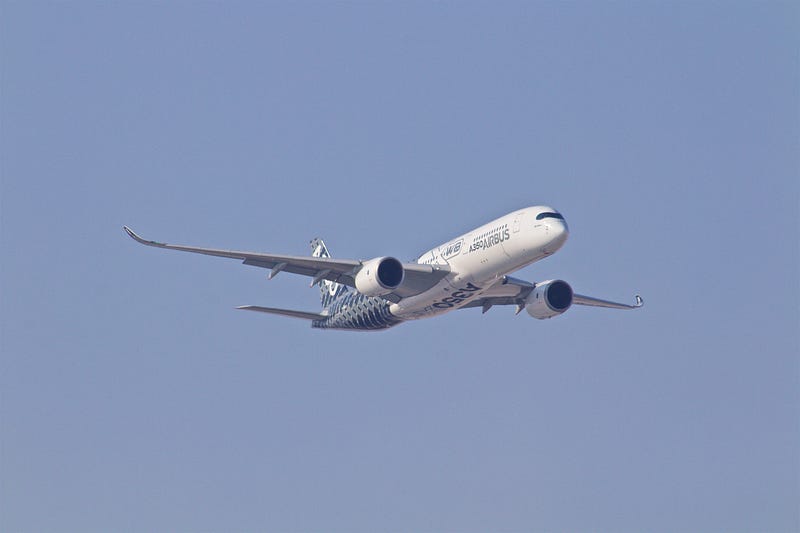Can AI Revolutionize Aviation for a Sustainable Future?
Written on
The Climate Challenge in Aviation
Aviation is at a crossroads, facing increasing scrutiny as climate policies tighten. While modern aircraft can whisk passengers across the globe at astonishing speeds—over 500 mph for just a few hundred dollars—they are also significant contributors to pollution. As we approach a critical climate tipping point, the aviation sector must evolve or face severe consequences. Fortunately, artificial intelligence (AI) emerges as a potential game changer. But will it be sufficient?
Before delving into the potential of AI, it's crucial to grasp the scale of aviation emissions. For instance, a typical direct flight from London to Los Angeles lasts about eleven and a half hours and costs around £460. However, this journey generates a staggering carbon footprint of 1,200 kg per passenger. When multiplied by 380 passengers, the total carbon output reaches an astonishing 456,000 tonnes of CO2. To put this into perspective, this one-way trip emits as much carbon as driving a VW Golf 1.4 TSI for over 2 million miles!

Despite being a relatively small sector, aviation accounts for 2% of global carbon emissions. This alarming statistic has prompted governments to demand change from the aviation industry.
How AI Can Transform Aviation Efficiency
AI has the potential to make aircraft significantly more fuel-efficient. During critical phases like takeoff, ascent, and cruising, planes consume large amounts of fuel, especially when battling headwinds. AI can optimize these scenarios by suggesting the most fuel-efficient routes and altitudes.
For example, during the ascent to cruising altitude, flying against a headwind can actually enhance lift, which could warrant a detour. However, this detour must yield more fuel savings than the extra fuel consumed during the diversion.

Conversely, cruising is more efficient with a tailwind. There are numerous high-altitude air currents that could make it worthwhile to ascend to a higher altitude for a faster tailwind. Yet again, the fuel savings from the tailwind need to outweigh the fuel consumed during the ascent.
Determining the optimal solution for these scenarios is complex, requiring precise weather forecasting and consideration of numerous aircraft parameters, such as weight changes from fuel consumption and aerodynamic drag. This intricate web of variables makes it impractical to rely on simple mathematical models.
Nevertheless, AI can leverage historical flight data, real-time telemetry, and sophisticated weather models to chart the most efficient flight paths, thereby enhancing overall fuel efficiency.
Currently, this AI technology is in testing and development, with the potential to save around 5 million tonnes of carbon dioxide annually if implemented across the industry. While this is a modest improvement relative to the aviation sector's annual carbon output of 700 million tonnes, it represents a crucial step toward progress.
Transitioning to Carbon-Neutral Fuels
As the aviation industry seeks to move away from fossil fuels, carbon-neutral alternatives like synthetic fuels and biofuels are gaining traction. Theoretically, these fuels could allow planes to operate with no net carbon emissions, all while maintaining existing infrastructure. However, there is a significant drawback.
Both biofuels and synthetic fuels demand extensive land use, which could lead to the destruction of vast natural habitats to create large solar farms, monoculture crop fields, and large refineries. Although the atmospheric carbon produced may be low, the ecological impact could be severe, resulting in an entirely different environmental crisis.
This reality underscores the need for aviation to not solely depend on carbon-neutral fuels for its future. Enhanced efficiency is crucial; otherwise, high fuel consumption could devastate ecosystems. AI-driven systems like the one mentioned can reduce fuel requirements, minimizing the ecological footprint as the industry transitions to more sustainable fuel sources.

AI's Role in the Future of Aviation
AI will be instrumental in this transition. Beyond optimizing flight paths, it can also enhance aircraft design and operational practices. We're just beginning to uncover the potential of AI in aviation; soon, nearly every facet of the industry could be fine-tuned by advanced AI technologies. Thus, while a reduction of 5 million tonnes of CO2 may seem trivial, it marks the beginning of revolutionary advancements.
So, can AI save aviation?
Not by itself. However, it can enhance the efficiency needed for carbon-neutral fuels to become a realistic alternative. The future of aviation remains uncertain, but innovations like these could ensure it withstands the pressures of stringent carbon regulations. We can take comfort in the thought that our vacations may remain unaffected by climate change.
Can AI SAVE A CRASHING Plane? - TFS, RFS, Microsoft FS - YouTube
A look into how AI technologies might assist in emergency aviation scenarios.
AI in Aviation: The Future of Flight Unveiled - YouTube
An exploration of how AI is set to transform the aviation industry.